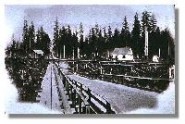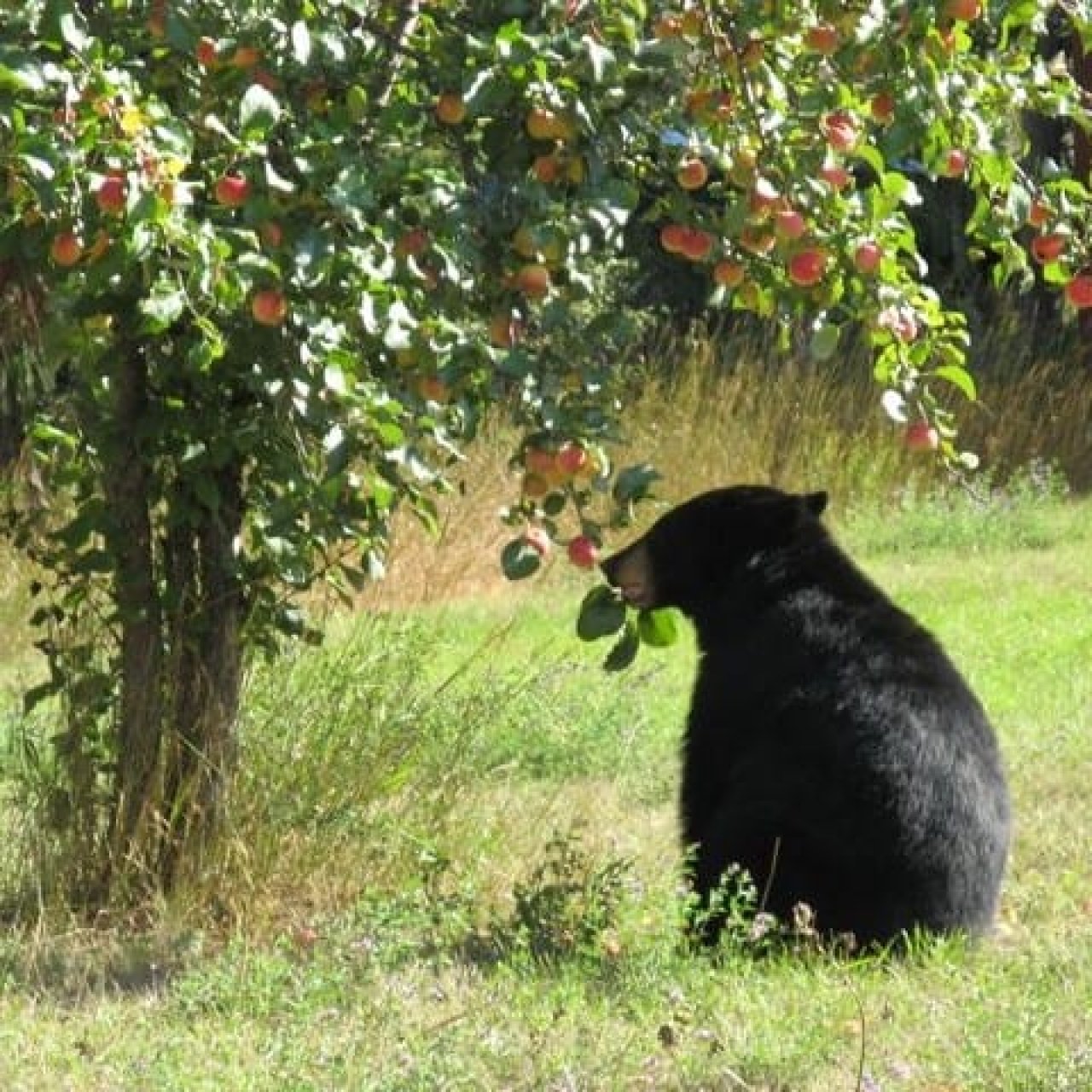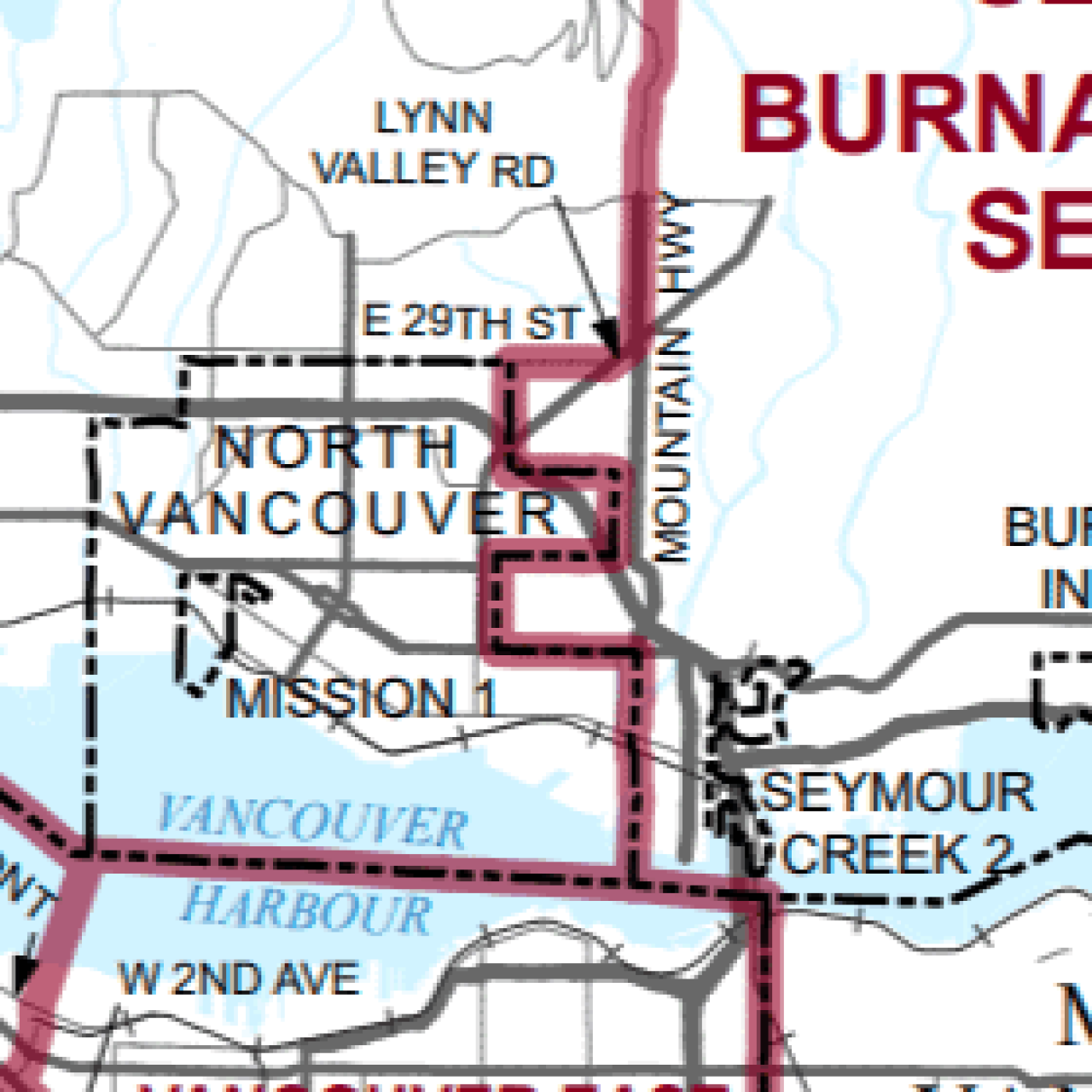District workers are up the creek
FROM THE EDITOR: It’s always been easy to be impressed by Lynn Valley’s trees; after all, the world’s tallest fir – measuring 417 feet high and 77 feet around – was documented here in 1875. But for the next few months at least, it’s Lynn Valley’s streams that will be in the spotlight, thanks to a project being launched by North Vancouver District.Most of Lynn Valley drains into the 23-km Hastings Creek, which springs from the east slope of Grouse Mountain and lets out into Lynn Creek near Hoskins and Arborlynn.Hastings Creek and its tributaries (including Thames Creek) played a huge role in Lynn Valley’s early logging days, allowing for mill ponds and the rushing water that carried shingle bolts down the area’s infamous log flumes. But damming and later urban development took its toll on the creek, and – now that the Official Community Plan has passed and set out a framework for the future – North Van District is doing an in-depth study of the waterways to determine how local streams can be protected or enhanced.According to Rjchard Boase, NVD Environmental Protection Officer, creeks “tend to suffer dramatically from the cumulative effects of many small infringements.” The District has contracted with environmental and engineering consultants who will walk the streams to check the stability and composition of their banks, log what natural species are present (or notable for their absence), take photos, and assess drainage infrastructure.Since so many Lynn Valley homeowners have streams running near or through their property, the District wants to alert residents to the project, as they will no doubt see the researchers in action (they will be carrying identification). The work will start at the end of January, and likely wrap up by April 30. Results will be presented to the public in June.There have already been many improvements made to the health of Hastings Creek since various restoration projects began in the late 1970s with the installation of a fish ladder near the mouth of the creek. Today, after the addition of more ladders and many environmental and fisheries projects undertaken by everyone from the North Shore Streamkeepers to school children, Boase says the fish population is alive and vital.Coho salmon, he reports, travel Hastings Creek up to and including Hunter Park, while resident trout are also active above that section and into Twin Lakes.While the municipal government will be looking at ways to further protect our local waterways, there is plenty that homeowners can be doing to ensure the health of the Hastings Creek watershed.For information on development restrictions around streams, click here. Or visit this site for a number of lawn, garden, automotive and other household tips that help ensure clean waterways.And to learn more about the Hastings Creek Watershed Management Plan initiative, click here or call North Vancouver District’s Engineering or Environmental Department at 604-990-2450. - Peggy Trendell-Jensen
But damming and later urban development took its toll on the creek, and – now that the Official Community Plan has passed and set out a framework for the future – North Van District is doing an in-depth study of the waterways to determine how local streams can be protected or enhanced.According to Rjchard Boase, NVD Environmental Protection Officer, creeks “tend to suffer dramatically from the cumulative effects of many small infringements.” The District has contracted with environmental and engineering consultants who will walk the streams to check the stability and composition of their banks, log what natural species are present (or notable for their absence), take photos, and assess drainage infrastructure.Since so many Lynn Valley homeowners have streams running near or through their property, the District wants to alert residents to the project, as they will no doubt see the researchers in action (they will be carrying identification). The work will start at the end of January, and likely wrap up by April 30. Results will be presented to the public in June.There have already been many improvements made to the health of Hastings Creek since various restoration projects began in the late 1970s with the installation of a fish ladder near the mouth of the creek. Today, after the addition of more ladders and many environmental and fisheries projects undertaken by everyone from the North Shore Streamkeepers to school children, Boase says the fish population is alive and vital.Coho salmon, he reports, travel Hastings Creek up to and including Hunter Park, while resident trout are also active above that section and into Twin Lakes.While the municipal government will be looking at ways to further protect our local waterways, there is plenty that homeowners can be doing to ensure the health of the Hastings Creek watershed.For information on development restrictions around streams, click here. Or visit this site for a number of lawn, garden, automotive and other household tips that help ensure clean waterways.And to learn more about the Hastings Creek Watershed Management Plan initiative, click here or call North Vancouver District’s Engineering or Environmental Department at 604-990-2450. - Peggy Trendell-Jensen
Looking for more?
-
Oct 2310:30 AM - 11:00 AMNorth Vancouver District Public Library (Lynn Valley Branch), 1277 Lynn Valley Rd, North Vancouver, BC V7J 0A2, Canada
-
Oct 24
Kids Chess Club
3:30 PM - 5:30 PMLynn Valley Library 1277 Lynn Valley Rd, North Vancouver BC V7J 0A2, Canada -
Oct 24
Meat Draw and 50/50
6:30 PM - 8:30 PMRoyal Canadian Legion Branch 114, 1630 Lynn Valley Rd, North Vancouver, BC V7J 2B4, Canada -
Oct 25
Ukrainian & Persian Choirs-free concert
1:00 PM - 3:00 PMThe Mollie Nye House 940 Lynn Valley Rd, North Vancouver BC V7J 1Z7, Canada







